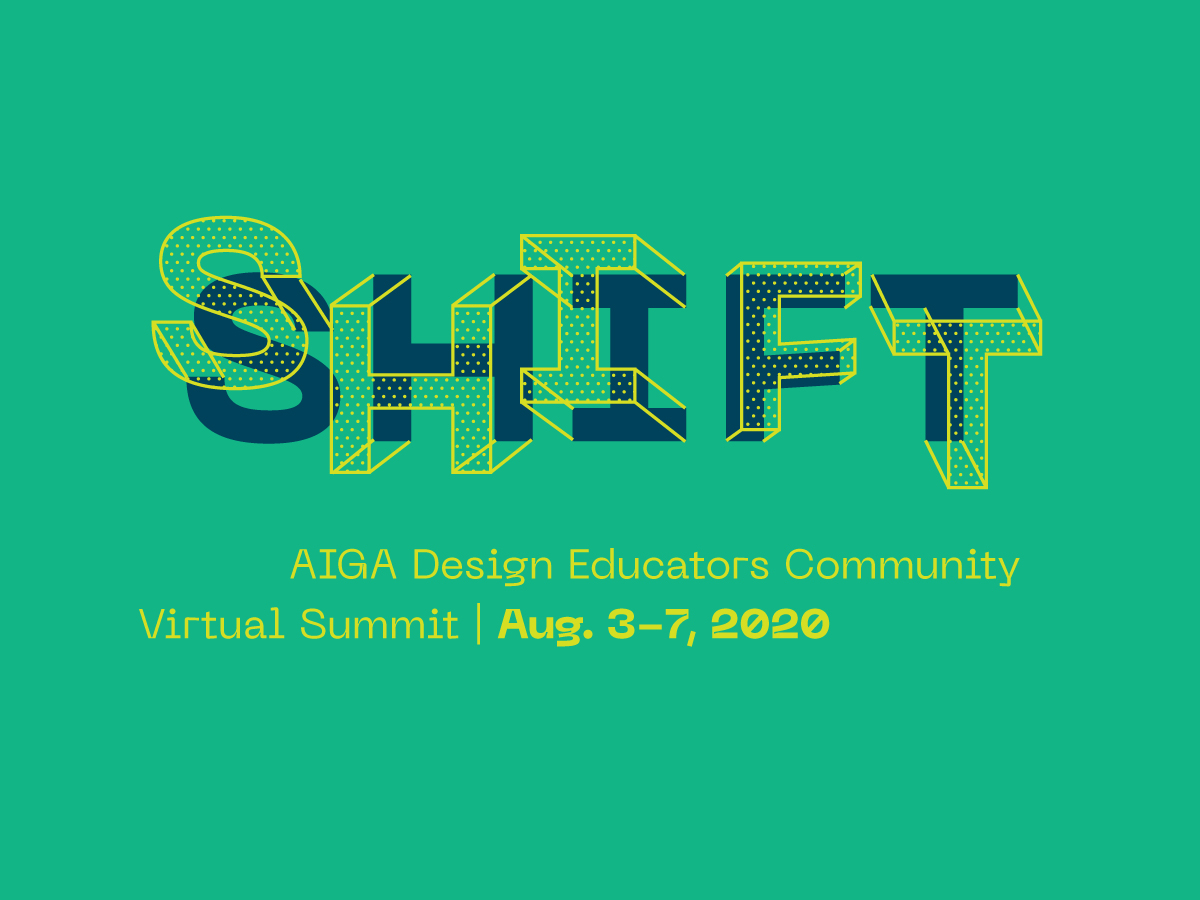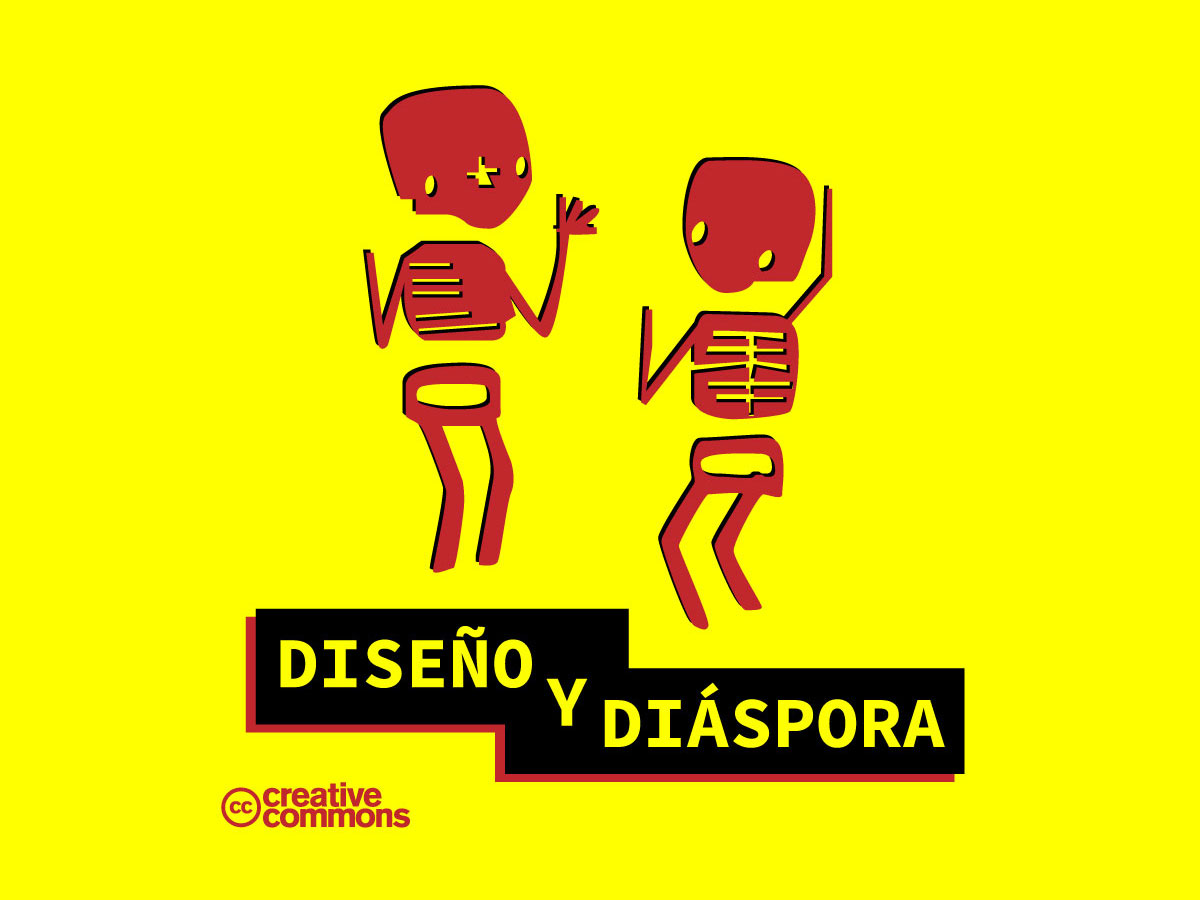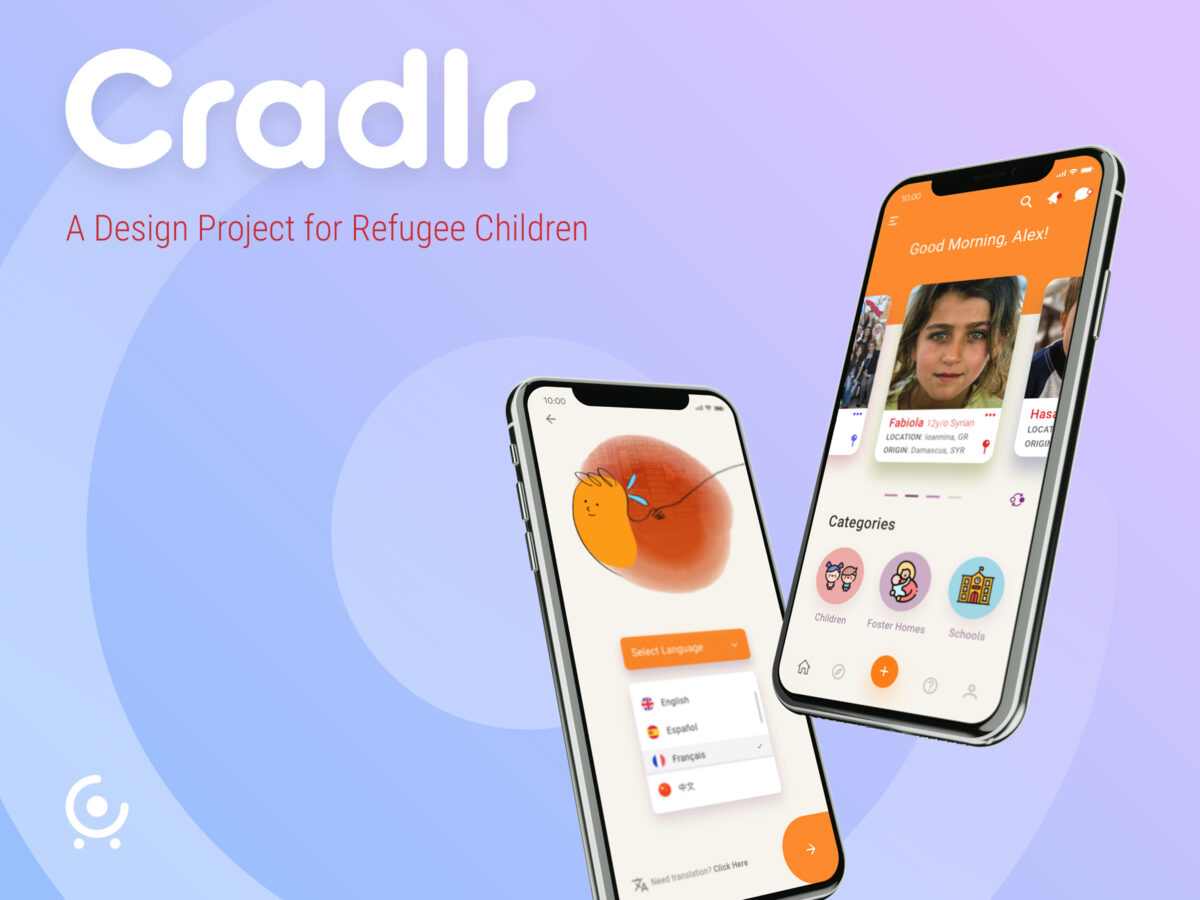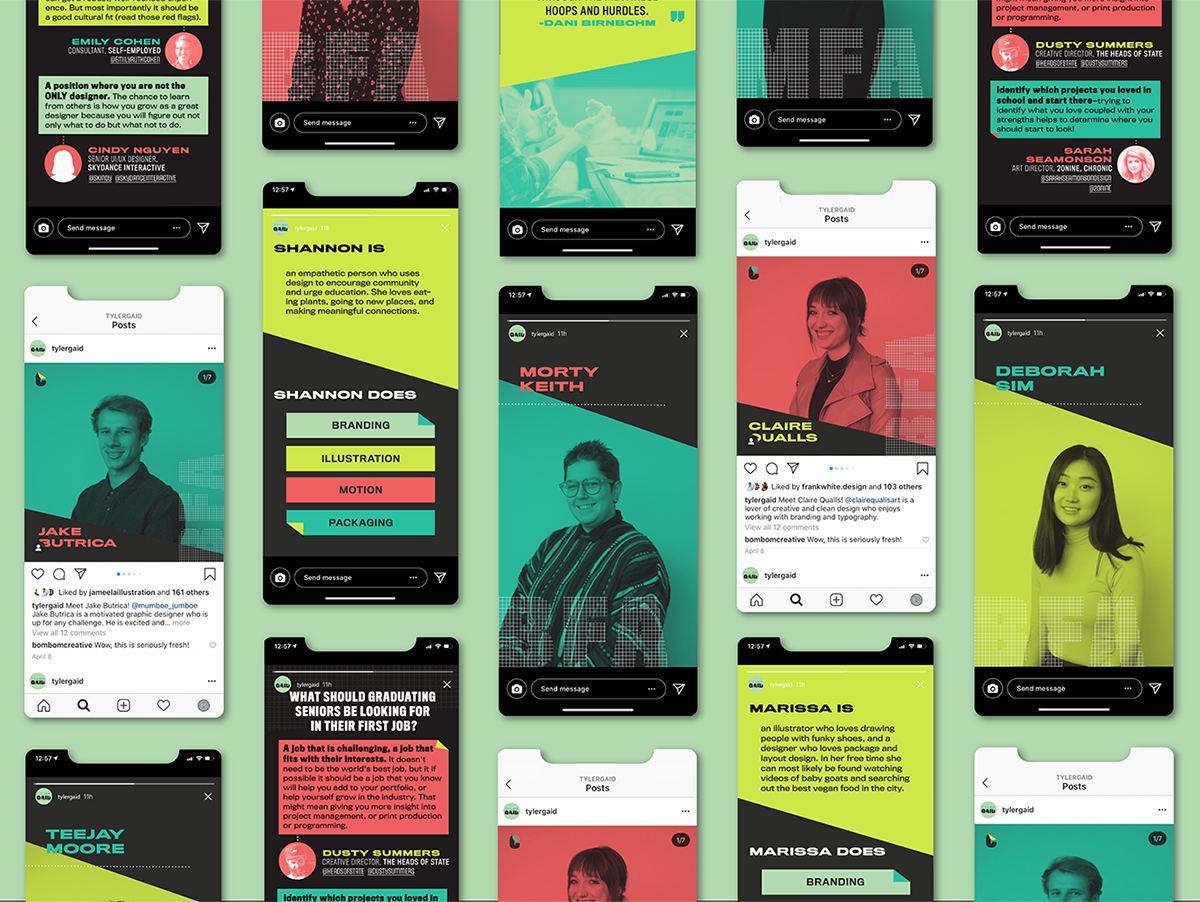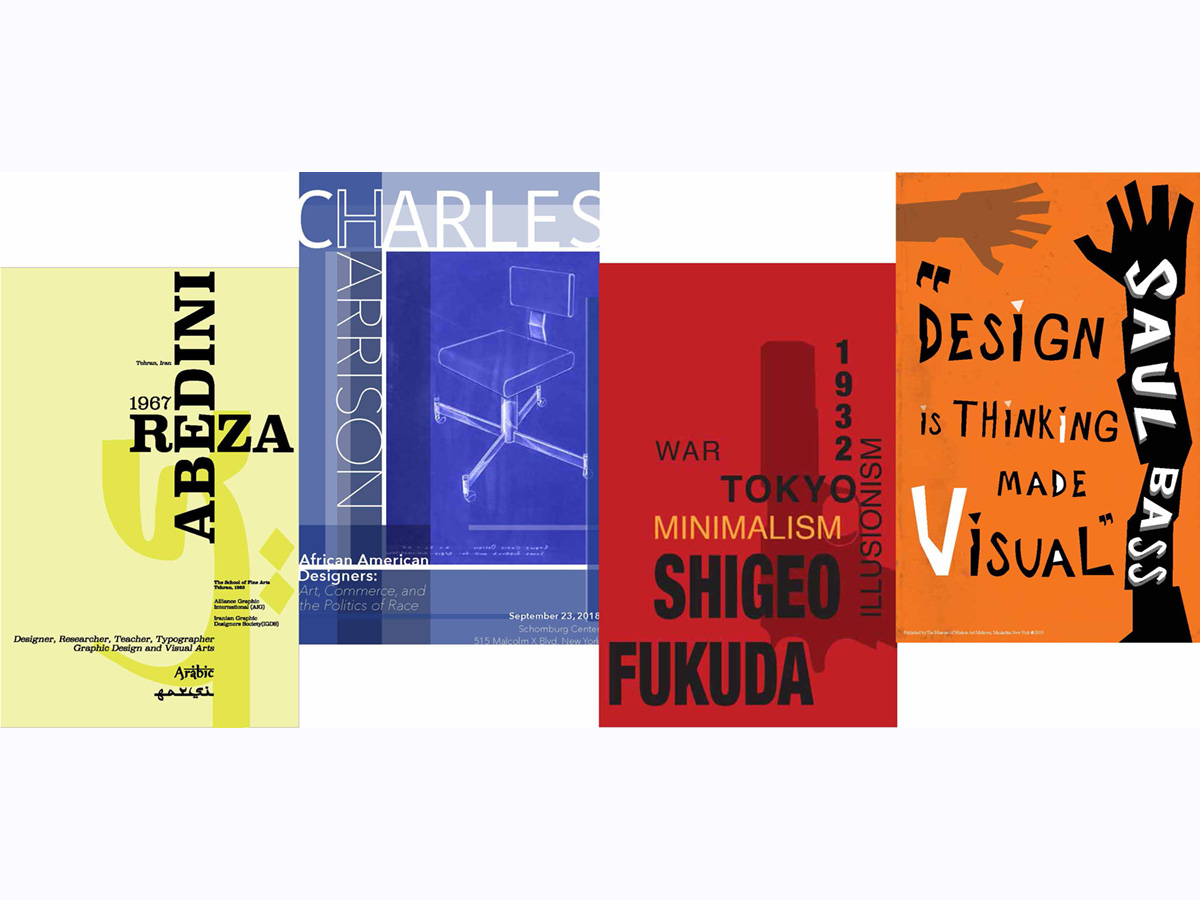Although it pains me to say so, I find that many undergraduate students think “theory” is a difficult, if not an irrelevant, even “boring” subject. In the case of my sophomore-level online course, “GD303 Graphic Design Theory + Practice,” students access course content asynchronously, oftentimes when they are alone, perhaps in the privacy of their own homes. In other words, their learning does not take place in a space where “real” people sit together as a “real” instructor moves around the lecture hall (who, incidentally, is able to observe facial expressions of confused or enlightened students). GD303 satisfies university “General Education” course requirements — consequently, at least half the students enrolled each semester are not Graphic Design majors.
The project I am pleased to submit to the 2020 Design Incubation Award is an Augmented Reality (AR) application, designed for my GD303 course and supported through a NCSU Course Innovation Grant from DELTA that I received in 2018. AR learning experiences, in the form of digital overlays that appear in the physical world, render abstract theoretical topics more concrete, no matter the student’s major, and in ways that motivate them to study and engage with course content (especially the textbook). Target images printed in the textbook trigger twelve different AR multimedia learning experiences that designed to “make visible” key theoretical concepts by animating them in a way that demonstrates and illustrates these concepts. The app is available to anyone, whether they own the textbook or not, and they do not need to be enrolled in the course. It is downloadable for free on Apple Store or Google Play (tablet or smart phone). The design of the app also meets usability and accessibility criteria for learners with vision disabilities.
While the physical world where we live and learn is a 3-dimensional spatial world, it is paradoxical that the materials for delivering online curricula are mostly 2-dimensional, flat media. The choice of AR is about exploring innovative solutions to the design of course content beyond typical textbooks, study guides, and Powerpoint lectures. The AR-enhanced reading experiences are designed to be immersive, colorful, surprising, interactive, and energetic to get students to delve deeper into and reflect upon the theoretical topics we cover. AR technology brings a “boring” textbook to life by connecting reading assignments (accessed as static pages) to real-world digital examples from different perspectives — examples that students prefer, i.e., dynamic media. It functions like an interactive “pocket study guide” that students can use while they read their assignments. It is designed to “perform” like a teacher in a live class by pointing out main concepts — and their locations — in the textually dense readings. As a “virtual instructor,” the application poses “pop-up pop-questions” to help students prepare for exams — a feature that helps students grasp one of Graphic Design’s main visual theories, “Gestalt”. The AR tools are designed to help students visualize other difficult-to-understand concepts, such as “objective reality,” “three-point perspective,” and “vectors,” as well as “see” how a designer uses a grid to layout a design. Furthermore, the AR experiences provide multiple means of representation (two dimensional, three-dimensional, audio, video, animated media) so that students can approach information in more than one way. Examples include: digital storytelling by a virtual agent who explains theories used in a seminal Postmodern design poster; the ability to see how form communicates meaning in the design of an architectural feature; or a virtual magnifying glass that lets users zoom into an image to read small type that otherwise could not be read in a print reproduction.
The move from an inert medium, such as a static drawing or photograph printed in a book, to dynamic interactive representations that visually demonstrate conceptual frameworks is positively changing how students think about theory in this course (see “Evidence of Outcome”). I considered how images already published in the textbook could incorporate new visual representations in the form of three-dimensional models and time-based animations— e.g., how static printed images become dynamic media that delves further into topics for those students who may want or need more in-depth explanations.
Early evaluations of the tool found that students (even non-majors) were not only enthusiastic about learning complex subjects, but they had made significant conceptual developments and improved exam scores (see “Evidence of Outcome”). Furthermore, the menu-driven, collapsible interface is designed for easy expansion — more experiences are planned in the future.
Each type of media I have incorporated in my GD303 course (the textbook, the lecture slides, the online Moodle platform, and now, the augmented reality application) are designed with a consistent “look and feel” across the different media. Graphic Design majors, especially, want to see the learning materials they engage with in their design courses as being informed by the design principles of good form, design consistency, and engaging visual vocabularies that they are learning about in their educations — it is my way of putting theory into practice.
All contributors affiliation is:
North Carolina State University
Distance Education and Learning Technology Applications (DELTA)
Rich Gurnsey, Lead Multimedia Designer
Laurie Gyalog, Lead Project Manager
Stephen Waddell, Immersive Media Developer
Matthew Casto, 2D/3D Artist
Deborah Littlejohn is an Associate Professor in the Department of Graphic Design & Industrial Design and affiliated faculty with the College of Design’s PhD in Design program. She teaches masters and undergraduate courses in the areas of history, theory, and research methods, as well as studios that focus on the cognitive-cultural aspects of design. Her research is guided by questions that address relationships between new information environments, technology, and people’s ability to learn, adapt, and change through the mediating influence of design. Projects focus on understanding the perceptions of professional, technological, and socio-cultural impacts on design’s professional and academic development. In the community engagement space, she works on visualization tools and interactive asset mapping applications to support stakeholders in communicating their community’s future development and potential.
Rich Gurnsey is a lead multimedia designer at DELTA (Distance Education and Learning Technology Applications) at North Carolina State University. In this role, Rich collaborates with instructors, subject matter experts, instructional designers, and other teammates to develop or improve upon courses and instructional materials via visual media including animation, video, AR, VR, motion graphics, illustration, and graphic design.
Rich’s recent projects include leading a team in the creation of an augmented reality app that transforms a graphic design theory textbook into an engaging multimedia experience, and helping to create a virtual organic chemistry lab — complete with 360 video and animation, which enables users to carry out five experiments in a VR environment. Additionally, Rich’s freelance animation work has been featured in film festivals in the U.S. and abroad, as well as in galleries, online, and on TV. He is a graduate of the College of Design at NC State.
Laurie Gyalog, a Lead Project Manager, with NC State University, works on a variety of projects ranging from course grants and learning analytics to workflow management of marketing and communications. Laurie works to enhance efficiency, effectiveness, transparency, collaboration and communication across all projects and areas of the organization. She is the founder of the NC State University Project Management and Agile Community (PMAC), a Certified Scrum Product Owner® (CSPO®), Certified SAFe® 5 Program Consultant (SPC), Certified SAFe® 5 Lean Portfolio Manager (LPM), Certified SAFe® 5 Product Owner/ Product Manager (POPM), Certified SAFe® 5 Practitioner (SP), Certified SAFe® 4 Agilist (SA), and ICAgile Certified Professional – Agile Coach (ICP-ACC).
Stephen Waddell works with NC State’s Distance Education (DELTA) department as an Immersive Media Developer. Generally this involves working with cutting edge XR technology to enhance course design, and exploring new software and hardware to further the media possibilities in and outside of the traditional classroom setting. With a background in both design and computer science his role blends both the design and realization of immersive media projects.
Matthew Castro is a 2D/3D Artists with over 5 years’ experience, who strives to make the work stand out from the rest. He enjoys working with others and troubleshooting any task that presents itself. Matthew collaborates with numerous DELTA staff as a team member on a variety of distance education projects, doing what he can to ensure the projects are memorable, usable, educational, and delightful.
Design Incubation Communication Design Awards 2020 recipient
![If This is Theory, Why Isn’t It Boring? Connecting traditional text[book]s to real-life contexts with Augmented Reality](https://designincubation.com/wp-content/uploads/2020/11/GD303-AR-Featured-Image-Littlejohn.jpg)
